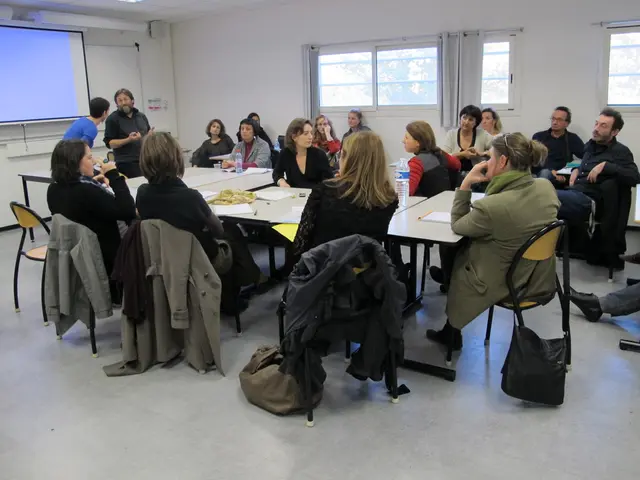controversy surrounding Santacruzan: religious tradition or spectacle?
Every year in May, Philippine towns undergo a remarkable transformation, with grand parades and the Santacruzan marking a distinct chapter of Filipino Catholicism, albeit a distorted version of it. Populated by golden arches, floral floats, marching bands, and young women in lavish gowns marching down narrow streets, this is the Santacruzan - a tradition steeped in local Catholicism.
However, beneath the radiance of crystals and the pageantry of the sagala lies an uncomfortable query: What exactly are we celebrating?
The Santacruzan, also known as the Sagalahan, culminates the month-long Flores de Mayo commitment to the Blessed Virgin Mary, a practice introduced by Spanish missionaries well over a century ago. Initially, it was a humble devotion: Filipino Catholics came together daily to recite the rosary and offer fresh blooms to the Virgin Mary, whose spiritual motherhood was revered amid the May bloom.
Somewhere along the way, the emphasis changed.
Originally, the Santacruzan was linked to the feast of Roodmas commemorating Saint Helena's discovery of the True Cross. In its earlier forms, the procession held a didactic purpose. Characters like Reyna Elena and Constantino acted as visual catechesis, their roles intrinsically tied to the theological narrative of salvation. Other figures, from biblical women to personified virtues like Faith, Hope, and Charity, depicted the arc of Christian morality and Church history.
It was, in essence, designed to instruct and inspire. A moving theatrical stage show meant to uplift the spirit, not just pleasing the eye, but stirring the heart.
Nowadays, that original intention has become a mere footnote in a rapidly secularizing performance. The saintly parade has morphed into a runway. The language of devotion has been supplanted by the grammar of spectacle. Whilst the event still bears Christian symbols, its gravitational pull has shifted - from catechesis to competition, from piety to prestige.
Ironically, even Catholic parishes have not been untouched. In some regions, the title of Reyna Elena no longer honors St. Helena but instead goes to the most prolific fundraiser. Once a demonstration pointing towards the Cross, the procession now pays homage to finance. The communal act of devotion has been rebranded as a cultural heritage exhibition. While it remains glamorous, it simultaneously risks being hollow.
It's essential to make one thing clear: the Church is not averse to beauty. In the Christian tradition, beauty isn't limited to superficial allure; it's about reflecting divine order and goodness - a light that stirs our souls to seek God. An abundance of beauty in isolation, though, is a reflection of an empty faith, like a rosary adorned with roses but without prayer.
The problem lies not in beauty but in beauty divorced from significance. When ostentation overshadows spirituality, when excess eclipses essence, we are left with a faith that is lavish but unsubstantial.
In a Church increasingly encouraged to stand with the poor, the marginalized, and the forgotten, we face the challenge to reinvent not just our wallets, but our perspectives. What if the monies designated for gowns and garlands were instead allocated to feed the hungry, shelter the homeless, or educate the young? What if our communities demonstrated their empathy more visibly than their attire?
Of course, traditions adapt, and no one proposes eliminating the Santacruzan from the calendar. Yet we mustn't let it drift away in the glimmer of cultural nostalgia. We must restore its soul - prayerful, educational, centered on Christ.
Should we fail to do so, the risk is not that the Church becomes irrelevant. The risk is that it becomes indistinguishable from a fashion show, from a fundraising gimmick, from an empty performance of faith with no substance.
And surely, we are meant for more than that.
[Gerard Mapalo, aged 26 and a theology instructor at Saint Louis University in Baguio City, provides insights based on his personal experiences and research. Hailing from Tubao, La Union, he was formerly a seminarian for the Diocese of San Fernando de La Union and the University of Santo Tomas Central Seminary, where he also served as chancellor.]
- The Santacruzan, a tradition deeply rooted in Filipino Catholicism, has expanded its focus from religious teaching and devotion to fashion, as it has morphed into a runway show, prioritizing spectacle over spirituality.
- In the modern-day Santacruzan, the title of Reyna Elena, traditionally given to those demonstrating devotion and piety, now simply goes to the most prolific fundraiser, symbolizing a shift from religious significance to cultural fashion and prestige.








